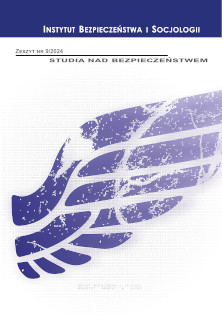Abstrakt
W ostatnich dekadach globalna gospodarka przeszła znaczącą transformację, głównie ze względu na globalizację i rozwój technologiczny. Jednym z kluczowych elementów tej zmiany była rola Chin jako „światowej fabryki”, co przyczyniło się do intensyfikacji offshoringu produkcji przemysłowej. Jednakże, w obliczu rosnących kosztów pracy w Chinach, zmieniających się warunków geopolitycznych oraz nacisku na zrównoważony rozwój, obserwujemy stopniowy wzrost zainteresowania nearshoringiem. Niniejszy artykuł ma na celu zbadanie perspektyw nearshoringu produkcji przemysłowej z Chin i skupia się na kierunkach tej zmiany oraz wyzwaniach, jakie ona stwarza.
Bibliografia
Brouthers K.D., Institutional, Cultural and Transaction Cost Influences on Entry Mode Choice and Performance, “Journal of International Business Studies” 2002, vol. 33, no. 2.
Farndale E., Brewster C., Ligthart P. and Poutsma E., The Effects of Market Economy and Foreign MNE Subsidiaries on the Convergence and Divergence of HRM, “Journal of International Business Studies” 2017, vol. 48.
Henisz W.J., The Institutional Environment for Multinational Investment, “Journal of Law, Economics, & Organization” 2000, vol. 16, no. 2.
Hofstede G., Culture’s Consequences: Comparing Values, Behaviors, Institutions and Organizations Across Nations, Sage Publications, California 2001.
Kleindorfer P.R., Saad G.H., Managing Disruption Risks in Supply Chains, “Production and Operations Management” 2005, vol. 14, iss. 1.
Knight G.A., Cavusgil S.T., Innovation, organizational capabilities, and the born-global firm, “Journal of International Business Studies” 2004, vol. 35.
Porter M.E., The Competitive Advantage of Nations, Free Press, 1990.
Smith J., Challenges and Opportunities in Nearshoring, “International Journal of Production Economics” 2021.
Wiesmann B., Snoei J.R., Hilletofth P., Eriksson D., Drivers and barriers to reshoring: a literature review on offshoring in reverse, “European Business Review” 2017.
Alicke K., Morley-Fletcher T., Gupta R., Lund S., How COVID-19 is reshaping supply chains, McKinsey & Company, https://www.mckinsey.com/capabilities/operations/ our-insights/how-covid-19-is-reshaping-supply-chains, (accessed 05.06.2025).
Bispo P.H.N., Implementation of Strategic Human Resource Management Practices: A Review of the National Scientific Production and New Research Directions, “Revista de Gestão” 2019, vol. 26, iss. 3, , pp. 228–248, https://doi.org/10.1108/REGE-10- 2018-0102, (accessed 5.06.2025).
Hamadamin H.H., Atan T., The Impact of Strategic Human Resource Management Practices on Competitive Advantage Sustainability: The Mediation of Human Capital Development and Employee Commitment, “Sustainability” 2019, no. 20, art. 5782, https://doi.org/10.3390/su11205782, (accessed 5.06.2025).
Hamouche S., Human Resource Management and the COVID-19 Crisis: Implications, Challenges, Opportunities, and Future Organizational Directions, “Journal of Management & Organization” 2021, pp. 1–26, https://doi.org/10.1017/jmo.2021.15, (accessed 12.06 2025).
Johansson M., Olhager J., Manufacturing Relocation of Plants to and from Sweden – Extent, Characteristics and Performance, “Journal of Manufacturing Technology Management” 2018, vol. 29, no. 7, pp. 1184–1208, https://doi.org/10.1108/JMTM-01- 2017-0006, (accessed 20.06.2025).
Santacreu A.M., LaBelle J., Supply Chain Disruptions and Inflation During COVID-19, “Economic Synopses” 2022, no. 14, Federal Reserve Bank of St. Louis, https://research. stlouisfed.org/publications/economic-synopses/2022/05/12/supply-chain-disruptionsand- inflation-during-covid-19, (accessed 7.06.2025).

Utwór dostępny jest na licencji Creative Commons Uznanie autorstwa 4.0 Międzynarodowe.
Copyright (c) 2025 Array

